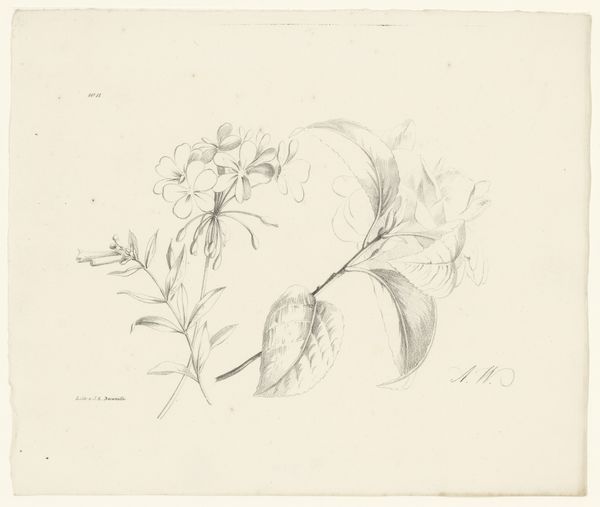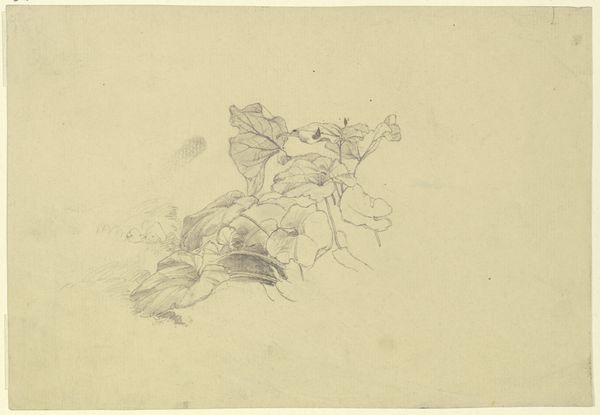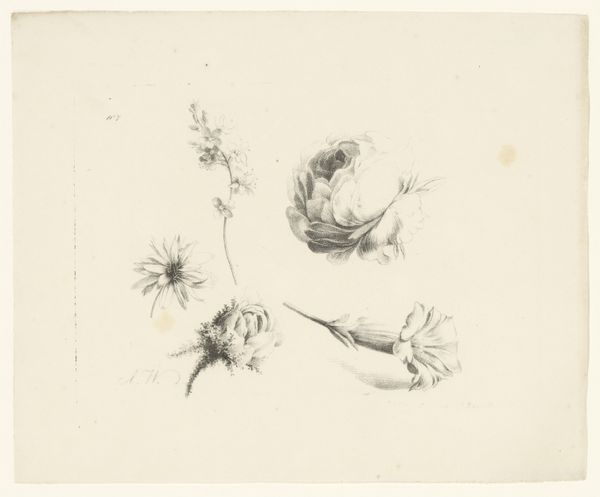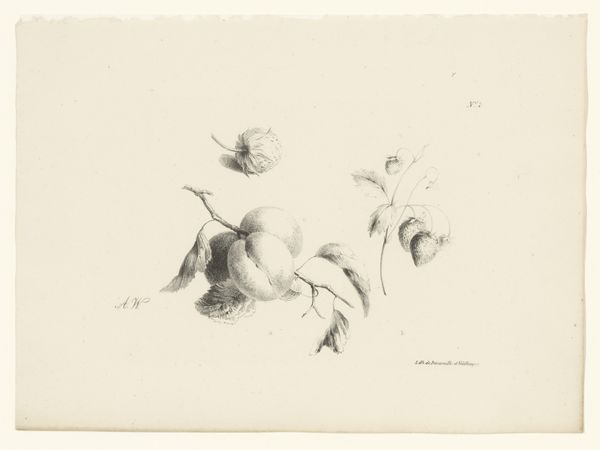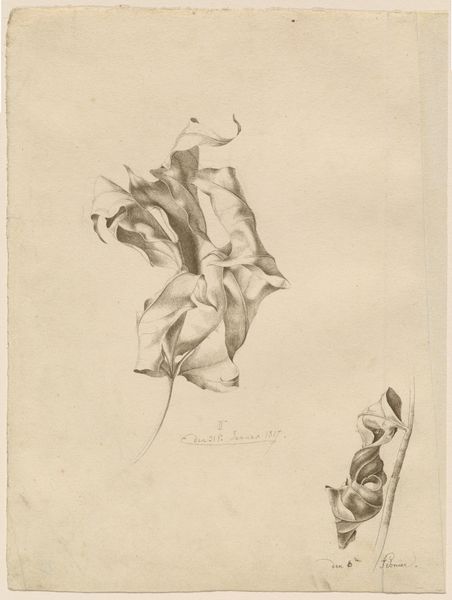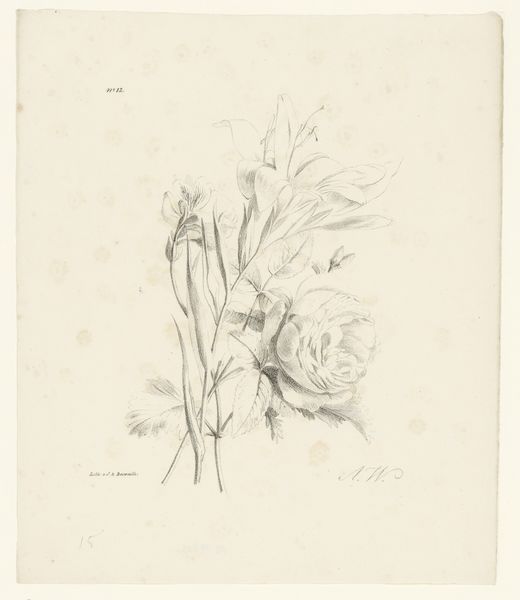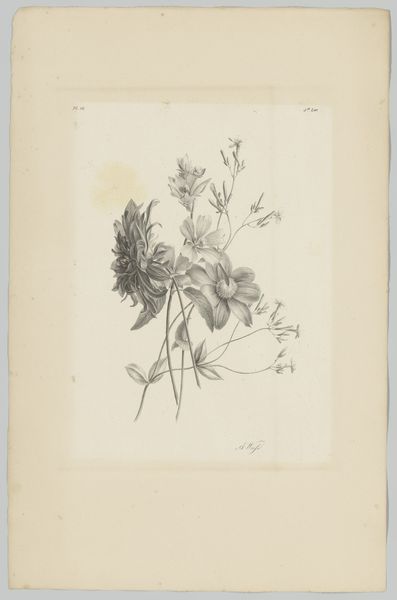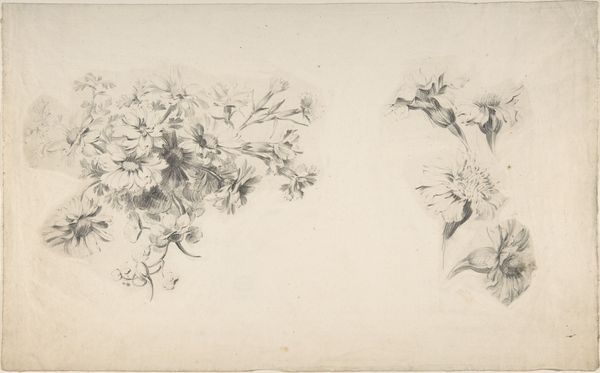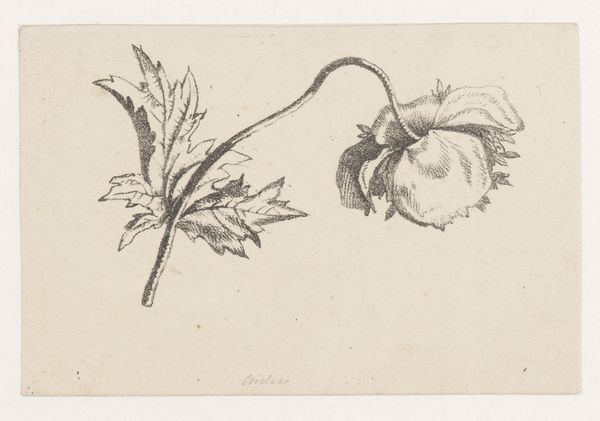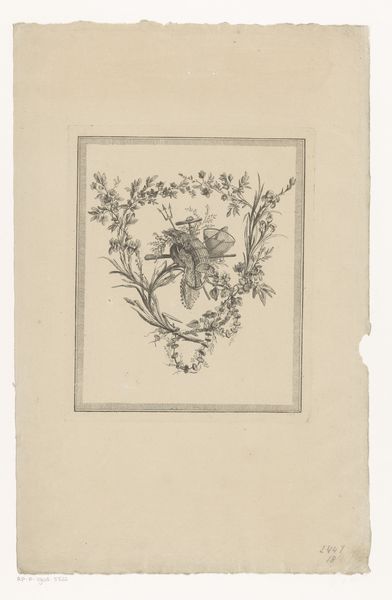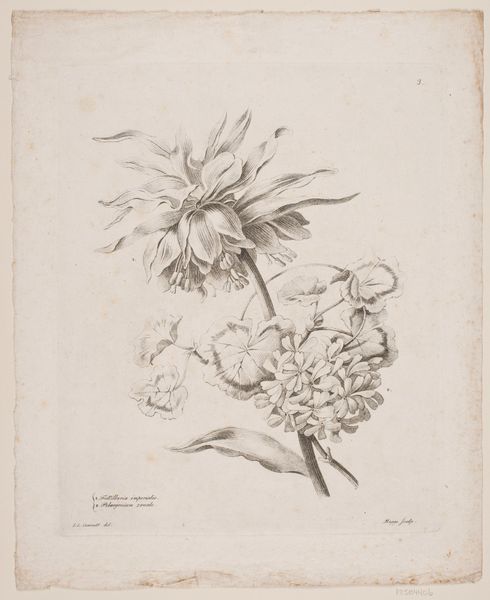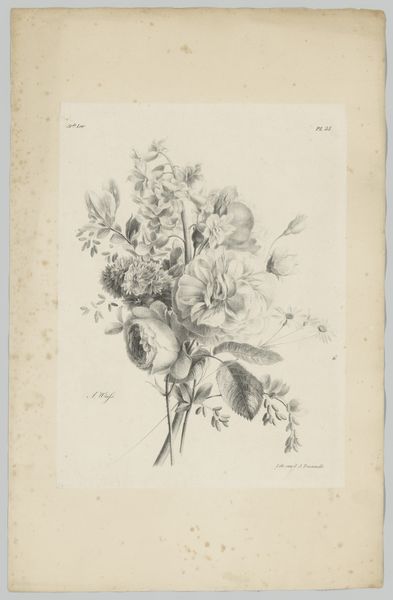
drawing, paper, pencil
#
drawing
#
flower
#
paper
#
romanticism
#
pencil
#
academic-art
Dimensions: height 209 mm, width 278 mm
Copyright: Rijks Museum: Open Domain
Editor: Here we have "Diverse Bloemen," or "Diverse Flowers," created around 1831-1832 by Anton Weiss. It's a delicate pencil drawing on paper. I'm immediately struck by the contrast; the detailed bloom is so lush against the plain backdrop. What can you tell us about this piece? Curator: Looking at this drawing through a materialist lens, I see more than just a pretty depiction of flowers. The artist’s choice of pencil and paper, relatively accessible materials, speaks to the changing landscape of art production during the Romantic era. It moves away from commissioned oil paintings on canvas toward a more democratic access to art creation and ownership. Editor: That's fascinating. How does that inform our understanding of the work? Curator: Well, think about the social context. Was Weiss making art for the elite, or was he tapping into a burgeoning market for prints and affordable art? The detail suggests a commitment to skill and precision – but what kind of labor went into procuring the materials? Was the paper handmade? What grade of pencil was used and what does that signify? The choice to depict "diverse" flowers—implying variety rather than, say, a single, prized bloom— hints towards a burgeoning culture interested in a variety of goods available for sale. Editor: So, by examining the materials and the means of production, we're not just looking at a flower, but also at the economics of art-making itself. Curator: Precisely! It shifts our focus from the singular genius of the artist to the wider network of makers, suppliers, and consumers who shaped artistic output. I wonder what was the value afforded to botanical studies during that period. Editor: That’s given me so much to consider—I now see the image not just as a drawing of flowers, but as a product embedded in a specific time and place, revealing how social and material conditions impacted artistic choices. Curator: Exactly, the history of art is just as much about pencils and paper as it is about brushstrokes and canvases.
Comments
No comments
Be the first to comment and join the conversation on the ultimate creative platform.
